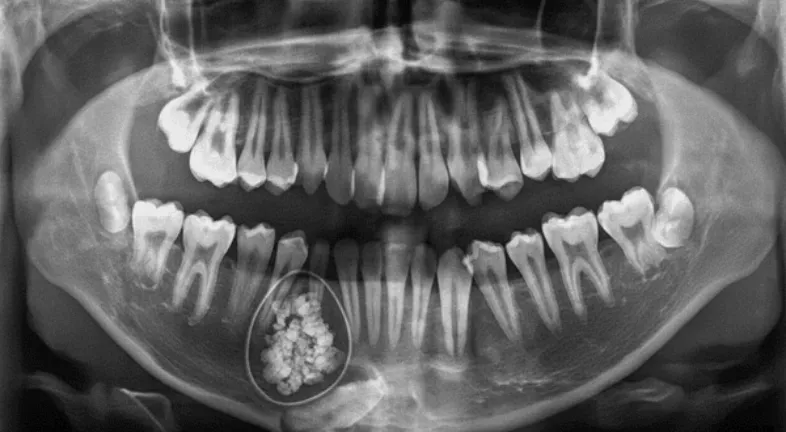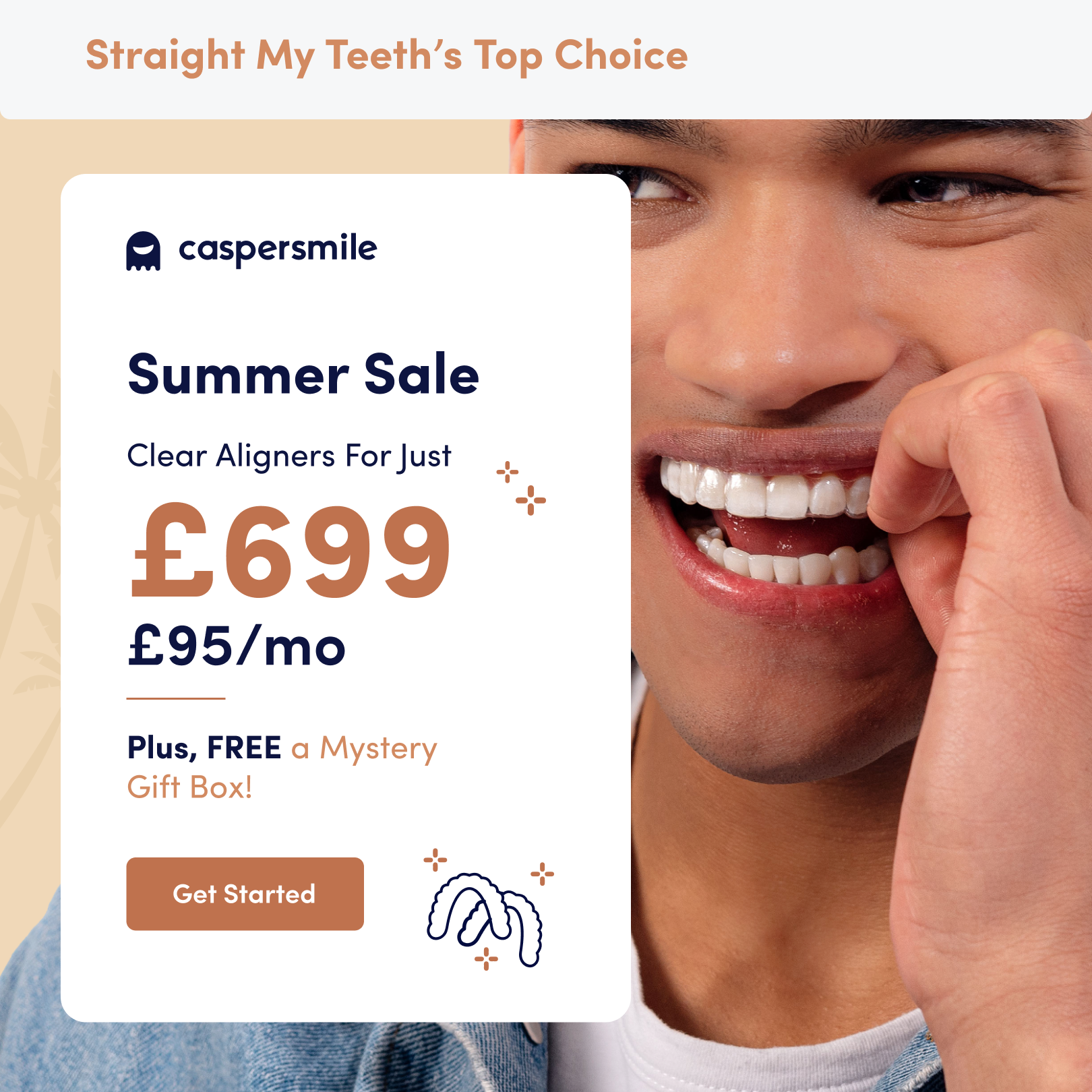
If we had a penny for every time someone didn’t smile fully out of shame for displaying their crooked teeth..! It also doesn’t help that crooked teeth offer a sanctuary for harmful bacteria to settle and grow in your mouth. Don’t you just wish you could stop your teeth from moving into a crooked position? While teeth aligners can help you fix crooked teeth, we dig deeper to find out what causes them in the first place.
.png)
Eating unhealthy foods can weaken your teeth because they don’t contain the correct amount of vitamins. Food which contains fibre such as fruits, vegetables, etc. is good because it toughens up your gums and helps remove plaque from your teeth.
On the other hand, anything high in sugar has a bad effect on teeth such as chocolates, juice, candy, etc. are harmful to your teeth. Not having your teeth checked at least twice a year by a dentist can sometimes result in issues such as gum disease or cavities. This can lead to crooked teeth which negatively impact your general health if you don’t get them fixed on time. Try to avoid junk foods and stay cavity-free to keep your teeth straight and healthy.
Habits that can damage your teeth are as follows:

It’s a condition in which people grind or clench their teeth. It is a dangerous habit that significantly affects dental health. There are two types of bruxism, during sleep bruxism or you are awake.
If your kids are clenching or grinding their teeth stop them because, in future, teeth straightening can be painful if you choose metal braces. But with new technology such as invisible braces, there is no need to worry since they have many advantages over traditional braces. Invisible braces are safe, comfortable, low cost and less painful for your child to wear. We recommend invisible aligners only for those who have permanent teeth and have lost all of their baby teeth.
Bruxism affects your dental health in many ways;

One of the main reasons people suffer from gum disease and tooth decay is incorrect brushing and flossing which are the two leading causes of tooth loss. If teeth are unaligned it creates trouble in brushing teeth hence, leads to plaque formation that leads to gum disease.

Since adolescence, thumb sucking is a habit that has been held by many individuals and it can have major implications on your smile. The thumb-sucking impact on your teeth will not be severe until your permanent teeth begin to develop. Sucking the thumb in this period may lead to misalignment of teeth. When you suck your thumb, you push your upper teeth forward.
Habits like nail biting, tongue thrusting, and sucking finger are the consequence of bad childhood oral habits. Thumb sucking can shred the teeth’s alignment and can lead to an expensive dental job in the future.
The types of unalignment caused by thumb sucking are open bite and overbite.
Open bite means the upper and lower teeth don’t touch when the mouth is closed. Overbite means when the upper front teeth overlap with the lower front teeth.

Invisible aligners are the best and most modern solution that is being used to treat crooked teeth. Clear aligners straighten teeth, a series of nearly invisible, removable aligners that are custom-made and fit perfectly over your teeth. The advantage of using invisible aligners for teeth straightening is that they are virtually invisible and do not contain poking wires and brackets. On top of that, braces cost far more than aligners.

After your aligner treatment gets over you will start wearing a retainer which is worn to keep the teeth in their newly aligned position. After completing with clear aligners, you need to wear the retainer for a while to keep the teeth stable until the jaw and gums grow around the new position. If you are not wearing your retainer your teeth will start moving back to their original position so it will be a waste of money spent on the treatment.
To find out whether you’re a suitable candidate for invisible braces, simply fill out our 30 seconds free assessment. You’ll have your answer within a couple of minutes!
Curated the best for your knowledge
 Odontomas: What They Are and How They're Treated
Odontomas: What They Are and How They're TreatedSome dental conditions are quiet. Too quiet, in fact. Odontomas fall into that category. They rarely make noise, yet they change things beneath the surface. And people usually have no idea about them. While malocclusions, teeth shifting, discoloration, or other cosmetic dental issues are fairly well known, odontomas are not. So, an odontoma is technically a type of tooth tumor. It’s benign, harmless, but oddly structured. Hence, it can interfere with tooth eruption, displace teeth, or cause swelling. However, there’s more to it. Here’s a deeper dive.
Read More.webp) Gingivitis Treatment: How to Reverse Early Gum Disease
Gingivitis Treatment: How to Reverse Early Gum DiseaseGingivitis tends to creep up quietly, usually after a stretch of rushed brushing or nights where flossing just slips your mind. The first sign is often bleeding when you spit toothpaste into the sink. That moment makes people Google how to cure gingivitis, which is honestly the right instinct. Early gum inflammation happens because plaque irritates the tissue around the teeth. If you respond quickly, it is fully reversible. Most cases improve quickly with proper cleaning, hydration and small tweaks in daily habits. The key is not ignoring those early red or puffy gum signals.
Read More.webp) Metallic Taste in Mouth: Causes and How to Get Rid of It
Metallic Taste in Mouth: Causes and How to Get Rid of ItHaving metal taste in the mouth first thing in the morning can be an unexpected experience. You wake up, take a swallow, and suddenly have a metallic taste in your mouth, as if you'd been chewing on a handful of change. It's annoying, a little scary, and sometimes for no apparent reason. For some people, it will be nothing but a minor nuisance; others may fall into the late-night goose chaser. Sometimes it's a sign that there is something wrong with your braces; other times, it could mean that there is something wrong with one of your teeth. But here's the good news: Most metallic tastes are temporary, harmless, and can be treated or resolved. So let's take a closer look at the possibilities.
Read MoreQuick Links

Heading